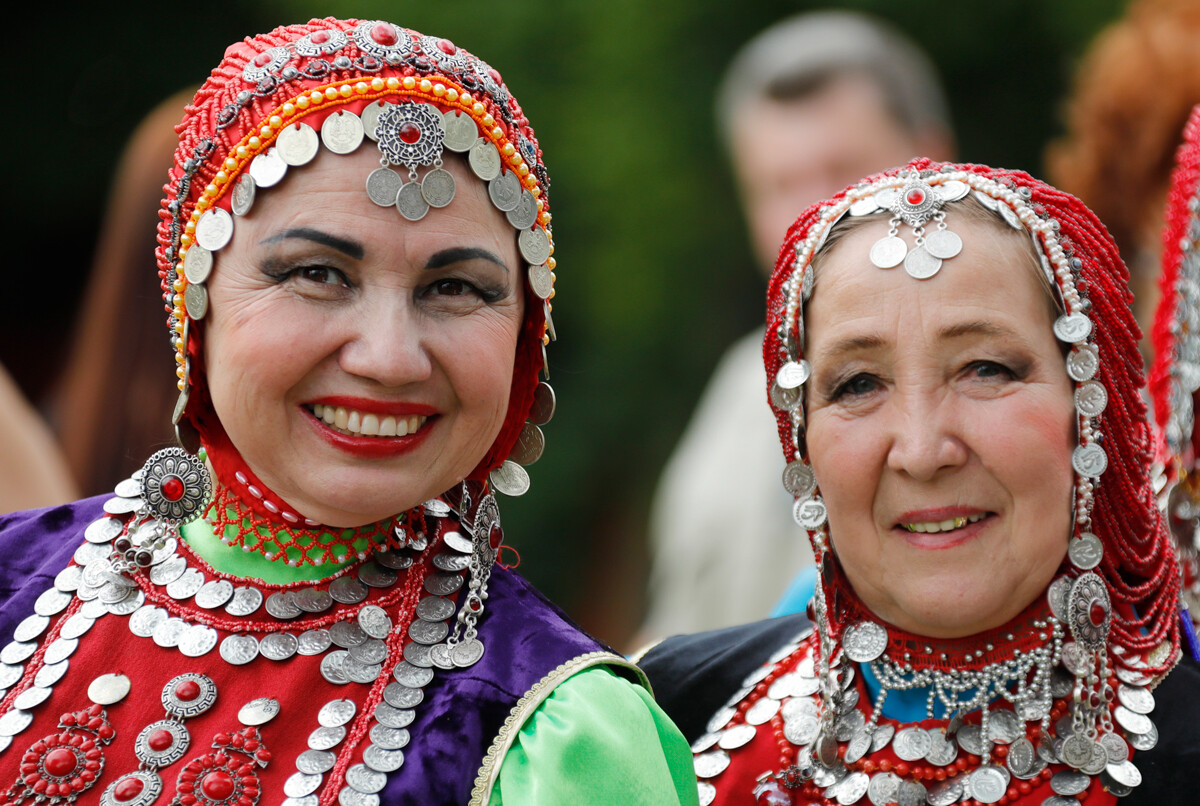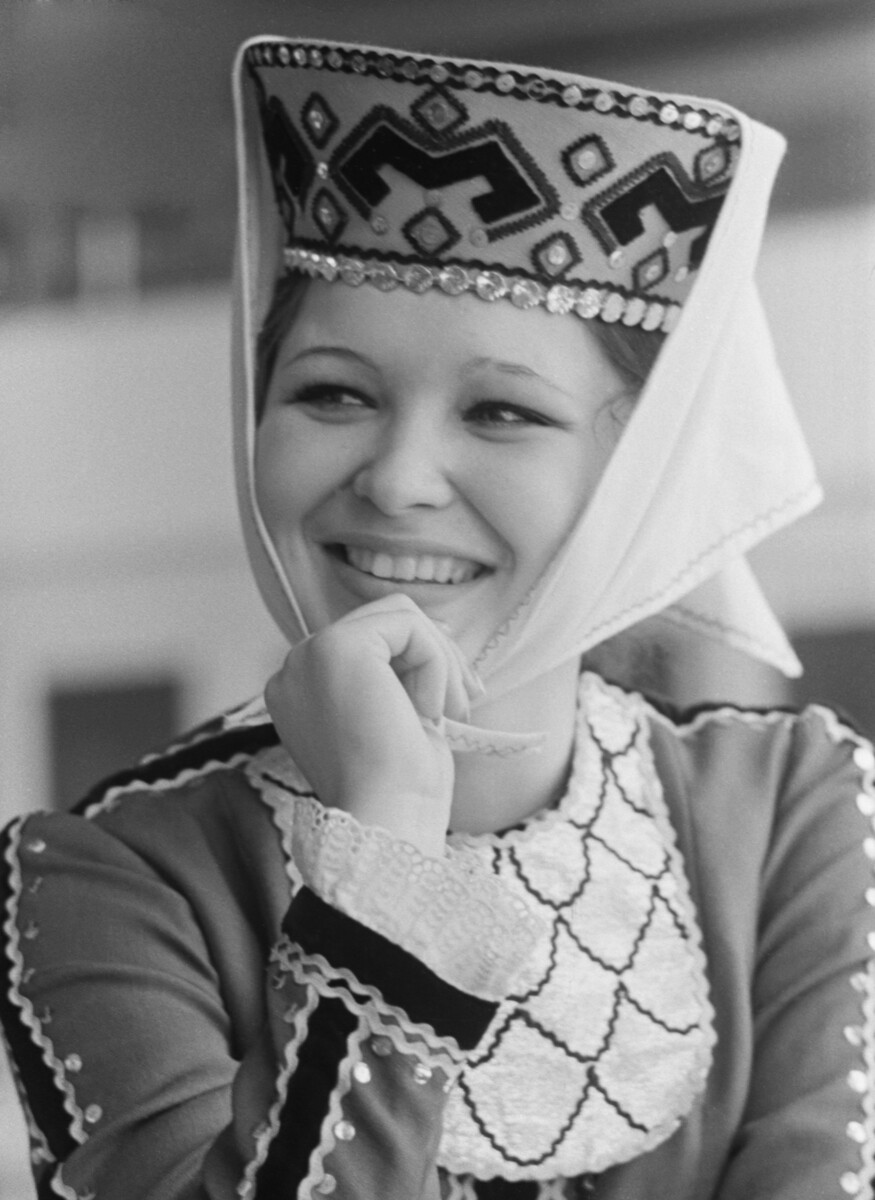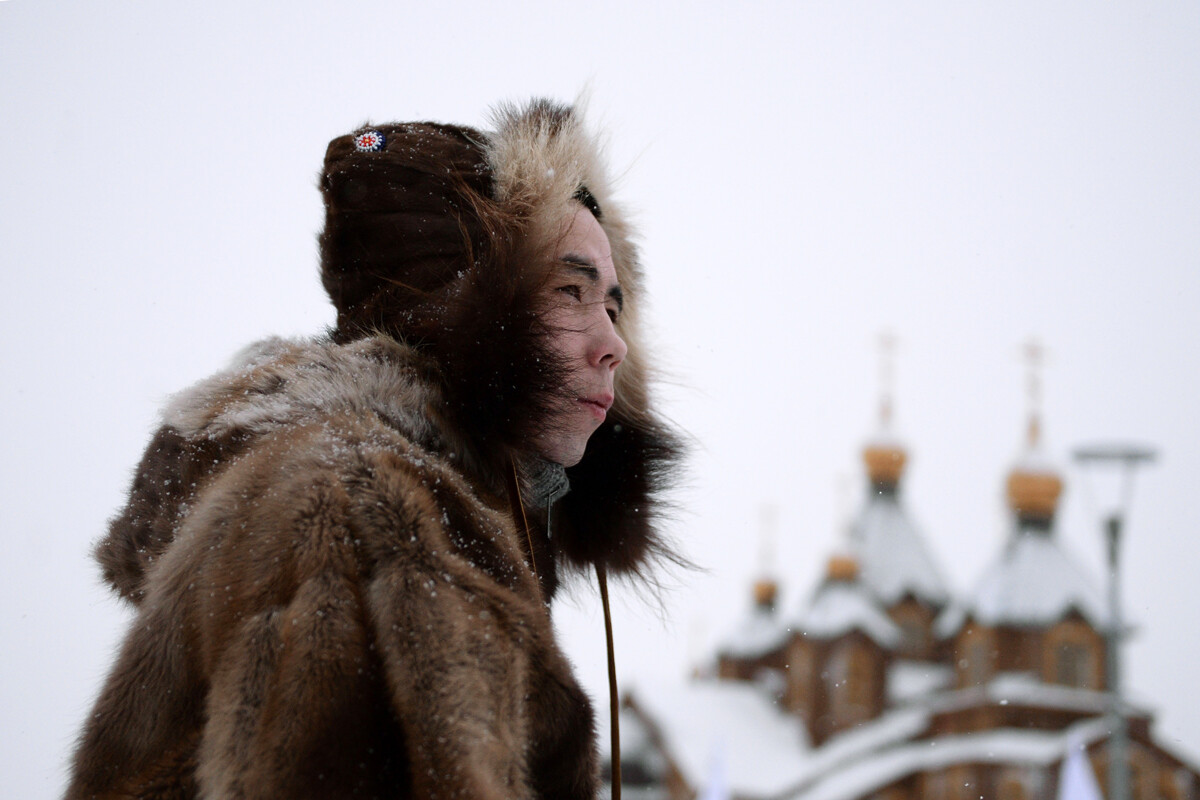
This headdress is a part of the Bashkir national dress. Usually worn by married women, it looked like a round hat made from soft cloth, with a hole in the back to hold a covering ribbon that was supposed to fully cover the hair. For beauty purposes and as a sign of a woman’s status, these ribbons were often decorated with gems, coins, and shells.



Dyabaka is a traditional headdress of Yakut women. This is the name of a winter hat that is padded from the inside and outside with fox fur for better protection from the harsh northern climate. Older versions of this headdress often had little horns on top that were made from squirrel or fox ears. However, more modern dyabakas look a bit different. Instead of ears, there’s a broadcloth figurine that’s split in two and stands on one’s head, symbolizing the female body.



The Mari people, who live on the territory of the Mari El Republic, also had their own unusual headdress. A shurka (from the Mari word ‘shur’, meaning ‘horn’) is a frame hat that’s worn by married women. The main feature was its height, which sometimes reached 40 centimeters. Shurka was usually made of birch bark, leather, and cloth, with one’s back covered by a canvas stripe, secured to one’s waist. While it’s unclear when shurka entered the Mari people’s wardrobe, it is mentioned in documents that date to the 16th century.


Across Central Asia various indigenous people wore similar-looking hats that modern-day researchers now commonly call ‘malahai’. However, they were also worn in Russia. For example, the native peoples of the Chukotka Peninsula also wore this tall headdress that looks like a leather conical hat. The clever design helped to protect a person from the cold and wind. Thanks to its three ‘ears’ (on the sides and on the back of the head), and an internal fur padding, the malahai helped people get through even the harshest of winters. By the way, sometimes such a headdress was even used as a helmet during summer because its outer layer of leather and thick fur inside helped protect a warrior’s head from blows.


The national dress of the Kalmyks is very diverse, featuring dozens of versions of both costumes and headdresses. However, a men’s cap, called a khadzhilga, is perhaps its most interesting element because of its highly exotic look. From the bottom, it looks like a regular fur hat, but on top it has the shape of a square with a red tassel on one of the corners. Both the presence of a tassel and its color are not coincidental: in the 15th century, an Oirat leader, Togon-taisha, issued a decree according to which the Oirats (the ancestors of the Kalmyks) had to wear a red tassel on their hat as a distinguishing mark. It also symbolized the sun and its emanating rays. According to some researchers, it also symbolized Togon-taisha himself as a great ruler.

If using any of Russia Beyond's content, partly or in full, always provide an active hyperlink to the original material.
Subscribe
to our newsletter!
Get the week's best stories straight to your inbox